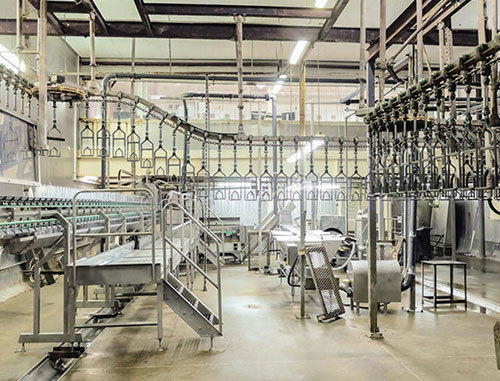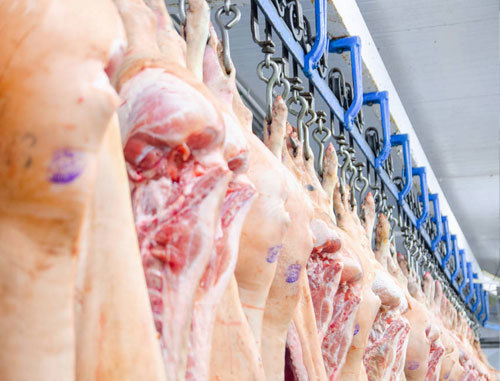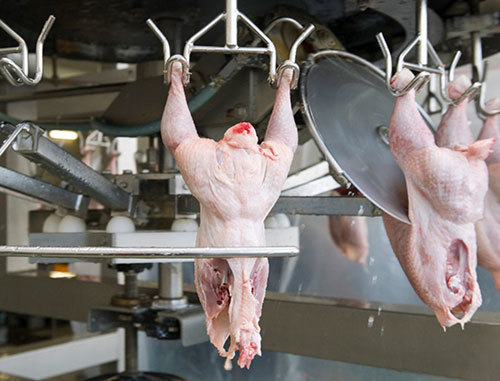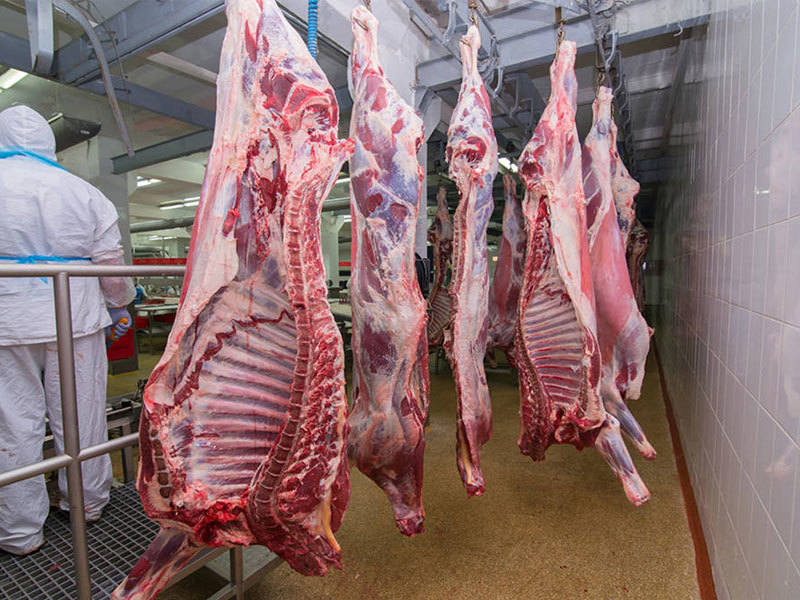Key points of pig slaughter technology
Release time:
2023-08-31
1 slaughter processing time control
Slaughter processing time has a great influence on meat quality and work efficiency, too long time is easy to cause PSE meat, low processing efficiency; short processing time is not conducive to the normal development of quality inspection and slaughter key link control, so the slaughter process arrangement should be reasonable, should try to shorten the whole slaughter processing time. It is generally believed that the conveying speed of the automatic hanging conveyor should not exceed 6 heads per minute, and the spacing between hanging pigs should be greater than 0.8 m. It shall not exceed 45 min from hemp to carcass quarantine, inspection and stamping.
2 Resting and fasting before slaughter
Pigs are susceptible to external stress factors during long-distance transportation, resulting in a large consumption of nutrients in the body, a decline in immunity, and nutritional and metabolic diseases such as dehydration, electrolyte disorders and metabolic acidosis in pigs, resulting in large changes in pork quality. Resting can reduce the stress response of live pigs in the slaughter process and reduce the incidence of PSE meat. However, long-term fasting will lead to excessive consumption of glycogen in pigs, thus increasing the incidence of DFD meat. Therefore, it is necessary to rest in strict accordance with the prescribed time and methods. The duration of rest is very important to the effect of rest. Wang Jipeng et al. believe that resting for 24 h before slaughter can significantly reduce the incidence of PSE meat, but will increase the loss rate. It is suggested that the waiting time should be less than 12 h. Hu Hongmei et al. concluded that the resting time should be 12~18 h through experimental data. It is generally recommended that the resting time is 16~24 h.
Three showers
The shower can not only wash the feces and other dirt on the body surface of the live pig to reduce the pollution during the slaughter process, but also stimulate blood circulation, which is more conducive to complete bloodletting. Shower water temperature should not be too high, should be set in different heights, different directions. Summer water temperature to 20 degrees Celsius, winter water temperature to 25 degrees Celsius is appropriate, the water temperature is too high or too low will bring adverse effects on the quality of meat, cleaning time to make the pig surface dirt wash is appropriate. In actual operation, it is necessary to ensure that each pig is showered to prevent cross-contamination during slaughter and bring greater losses.
4 stunning process
Good stunning equipment and standard operation are the key measures to reduce the occurrence of PSE pork and muscle bleeding. Electrocoma is a necessary process for mechanized slaughtering. Due to the large differences in pig breeds and individual weight, some pigs often fail to achieve the effect of stunning when using the same stunning voltage. If the stunning voltage is higher, the muscle color will turn white and the juice will ooze more. According to GB/T17236-2008, artificial hemp electrical appliances: voltage 70~90V, current 0.5~1.0 A, hemp electrical time 1~3 s, brine concentration 5%. Automatic hemp electric appliance: the voltage shall not exceed 90V, the current shall not exceed 1.5A, and the hemp electric time shall be 1~2 s.
According to the pig breed and slaughter season, adjust the voltage and hemp time appropriately to ensure that the pig is stunned by the current, but not dead.
5 Bloodletting methods and bleeding time
Bloodletting methods and bleeding time also have a greater impact on meat quality. If the bleeding time of live pigs is too short, some blood will remain in the carcass, which will affect the color of the meat, and the skin and subcutaneous fat of the carcass will be red after slaughter. At the same time, it will accelerate the reproduction of microorganisms in the meat and affect the shelf life of pork. If the pig bleeds for too long, it will prolong the time from slaughtering and bleeding to dissection and visceral removal, and the carcass will experience rigor mortis, increasing the production of PSE meat. During bloodletting, the knife should be inserted slightly to the right in the midline of the separation between the neck and the body for no more than 30 s, so as not to cause muscle bleeding. The knife should be drawn to the outside to cut off blood vessels, and the heart should not be stabbed. Heart stabbing will cause poor bloodletting, congestion and choking blood. If the length is not more than 5cm, the knife edge is too large, which will lead to the destruction of gill meat and water pollution in the hot hair pool. At the same time, the flesh and blood of the trough head will increase, resulting in the devaluation of the product. It is generally recommended that the bloodletting time should not be less than 5 minutes.
6 perm temperature and time
If the temperature and time of scalding are unreasonable, it will increase the incidence of PSE meat. If the temperature is too high, it will cause scalding and smashing, which will affect the appearance and easily cause pollution. If the temperature is too low, there will be too much residual hair, which will burden the subsequent links and even affect the quality of the finished product. Some studies have pointed out that 45 min after slaughter, the intramuscular temperature is higher than 38.5 ℃, the incidence rate of PSE meat is 66.84, and the incidence rate of PSE meat below 38.5 ℃ is 15.79. Therefore, the ironing temperature should be strictly controlled and not adjusted at will. Generally, the ironing temperature should be controlled at 60~63 ℃ and the time should be 3~5 min. If segmented ironing is used, it is generally 58 ℃ in the first paragraph, 60 ℃ in the second paragraph and 61 ℃ in the third paragraph.
7 Cooling and acid removal
After the pig is slaughtered, the body temperature rises, which becomes a hotbed for the breeding of bacteria, which is easy to rot and deteriorate. In addition, due to the increase of hardness and decrease of tenderness of meat, the flavor and taste are not good. In the process of cooling and removing acid, the meat is autolyzed, the small molecules of the muscle are broken, and polypeptides and amino acids are produced. The activity of enzymes in the meat and the growth and reproduction of most microorganisms are inhibited, the fiber structure of the muscle tissue changes, and it is easy to chew and digest. The absorption and utilization rate is also high, and the taste is better. Therefore, it is generally recommended to quickly reduce the meat temperature at -20 ℃ for 90 min, so that the central temperature of the deep muscle of the hind legs will drop from 38~40 ℃ to 20~25 ℃. The white strips are discharged into the acid discharge room, and the acid is discharged at low temperature in the cold storage at 0~4 ℃ for 24 h.
Related News









